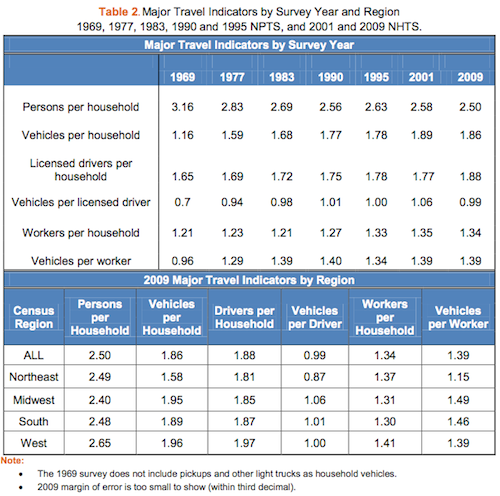Now Part of a One-Car Household

Personal mobility is a big part our lives, it often consumes a large percentage of our income. Over the 8+ years of this blog I’ve written about the many changes to my own transportation modes.
I had a car when I started, added a 49cc scooter after Katrina, got rid of the car in 2007, sold the scooter and bought a car in 2008 after my stroke, began using transit and then finally in April 2012 I sold my car.
Here are the posts:
- 9/2005: My Way of Dealing With Rising Gas Prices
- 7/2007: First Time in 25 Years, I Don’t Own A Car!
- 6/2008: My Beloved Honda Metropolitan Scooter Has Been Sold
- 7/2008: I Drove My Car Today
- 2/2010: No longer bus-averse
- 4/2012: I’m Car-Free…Again!
I have one more change, my boyfriend and I have been living together for more than two weeks and his car makes me part of a one-car household. Many one-car couples I know both drive the car, just depending upon who needs it. In our household, for now at least, he’ll be the sole driver.
This new status prompted me to look into some demographics of car ownership.

Interesting how the number of vehicles per household has increased over four decades even as the number of persons per household has decreased. However, the number of licensed drivers per household has increased. No surprise seeing the highest auto ownership in the Midwest.
Dave’s not averse to using transit so there will be times we will go places on the bus.
— Steve Patterson
First, congratulations on the latest chapter in your life! Second, a minor clarification – vehicle ownership is higher in the West (1.96) than in the Midwest (1.95). And third, like many statistics, these really aren’t that useful since the four “regions” are so broad. The stats for the city would be different from those for the county or more rural parts of the state. Bottom line, lifestyle, land use and the availability of good public transportation inform both vehicle ownership and use.
The more interesting statistic I see (in the ones you posted) is that the number or Persons per Household and Workers per Household are both significantly higher in the West than in the rest of the country – I wonder if this comes from the larger Hispanic population, the larger Mormon population, or both? Bottom line, statistics are just numbers. They can be interpreted and “spun” many different ways. They’re best used to track trends; any other conclusions need to viewed in a much larger context.
That’s why I give the source so everyone can interpret the information independently.
or economic? My wife and I both work. We moved from St. Louis to the San Fran Bay area because of an opportunity for me when my old employer let his company implode. The only way we could have made the move is with my wife, fortunately, being able to transfer her job at ATT. Housing costs are simply higher on the West Coast and therefore the cost to maintain same lifestyle requires two jobs if you want to live in a nice, secure area with decent schools. I tend to believe that some cities in the West simply have higher costs of living and therefore skew that statistic towards a two earner family.
As far as two car family, With my travel, with my wife working downtown and living in Shrewsbury relatively close to metrolink we were able to drop a car between us and my mother in law as we went from three to two cars. Unfortunately, we are back to three cars with my wife and I working opposite end of the Bay Area and mother in law still in St. Louis (cheaper to keep a mortgage in Shrewsbury than to rent a decent apartment near my house). I’m envious of anyone with a family/kids/supporting parents who can drop a car.
Cohabiting… Big step, congrats.
The wife unit and I have managed a one car household for the last decade. No kids, and myself working at home, makes that much more simple than it would for your average STL family I suspect. The absence of an additional car and insurance payment is a tough thing to give up.
For the past year we’ve managed with one car living in U-City because we’re close to transit and my work and my wife’s make it possible to walk, bike or use MetroLink. However, this is changing and we’ll be back to two cars soon. The reality is that it’s tough to have just one car with two full-time jobs (and kids as well).
The expense and responsibility of owning a vehicle. Car clubs make most
financial sense for: motorists who drive less than around 8,000 miles
per year; two and three-car households who have non-essential use of a
second or third car; and businesses that can use a car club vehicle to
replace pool car.